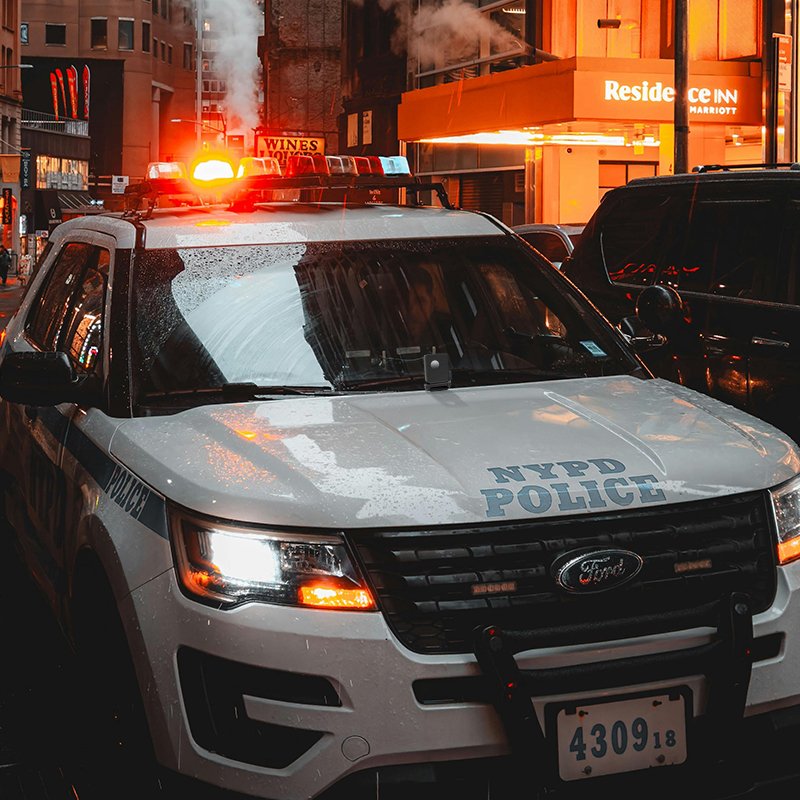Thermal Imaging Camera: Enhance Emergency Safety
Pierce darkness, save lives: Supercharge emergency vehicles with Thermal Imaging for ultimate rescue safety!
For heroes behind the wheels of ambulances, fire trucks, and emergency vehicles, every second means life or death. Reaching scenes swiftly and safely isn’t just a duty—it’s a life-saving mission.
Yet, this critical task faces relentless challenges: extreme driving conditions. Pitch-black nights, torrential rains, thick fog, and blinding snowstorms all too often conspire to obscure roads, hide pedestrians, and conceal deadly obstacles. Consequently, when visibility plummets, traditional headlights and night-vision dashcams frequently fail, thereby turning urgent missions into dangerous gambles.
Therefore, at this crucial juncture, advanced thermal imaging—especially automotive IR night vision cameras—transcends from a mere advantage to the core lifeline for emergency rescue safety.

Conquering Nighttime Driving Dangers
Emergency responders constantly operate in high-pressure scenarios: They must reach incident sites at lightning speed while simultaneously ensuring road safety for all. Unquestionably, the most critical—and deadly—challenge remains limited visibility during night operations or severe weather (dense fog/ torrential rain/ blizzards). Making matters worse, traditional lights and cameras inevitably leave dangerous blind spots in these conditions, further jeopardizing safety.\
Thermal Imaging: The Technology That Pierces Darkness
Thankfully, thermal imaging is now transforming this perilous landscape. Unlike visible-light-dependent devices, automotive thermal night vision cameras detect objects’ heat signatures. Specifically, humans, animals, vehicles, and even operating machinery emit invisible infrared energy. Crucially, high-end thermal imagers capture this energy and subsequently convert it into crystal-clear, high-contrast dashboard displays. Moreover, thermal imaging excels precisely where conventional tech fails:
Absolute Darkness Dominator:
Even on lightless rural rescue routes, thermal cameras need zero external light. By “seeing” heat, they consistently deliver crystal vision in moonless blackness.
Extreme Weather Warrior:
Remarkably, fog/ rain/ snow/ smoke obstruct thermal waves far less than visible light. As a result, this capability proves decisive in practice for fire trucks charging through smoke or ambulances battling blizzards.
Blinding-Glight Eliminator:
Common challenges like oncoming high beams, flashing sirens, and urban glare—which are all visually disabling factors—are completely filtered. Consequently, thermal images stay stable, reliably revealing true road conditions.
Long-Range Threat Detector:
Critically, advanced systems spot pedestrians emerging between cars or roadside animals beyond headlight range, thereby buying golden reaction time for evasive action.

Multidimensional Safety Gains for Rescuers
For emergency vehicle operators, it follows that these technological advantages deliver significant three-dimensional performance boosts:
83% Collision Risk Reduction:
By detecting pedestrians/animals/obstacles 5-8 seconds earlier in low visibility, accidents during high-speed responses are prevented at their source. Supporting this, studies confirm: This slashes nighttime incident rates by over 80%.
40% Faster Response Times:
Because drivers can maintain safe maximum speeds in rain/fog due to the fact that they literally “see” road threats, response times improve dramatically. Furthermore, when transporting critical patients, every minute saved increases survival rates by 22%.
Dual-Layer Scene Safety:
Additionally, at chaotic accident/ fire scenes, thermal imaging instantly flags debris, panicked crowds, and hidden hazards—effectively preventing secondary incidents while protecting all personnel.
57% Fatigue Reduction:
Finally, research shows struggling with poor visibility triples drivers’ cognitive load. In contrast, clear thermal views slash stress, leading to a 55% reduction in fatigue-induced errors.
The Critical Choice: Selecting Professional-Grade Equipment
However, beware: Thermal device performance varies wildly. Consequently, emergency vehicles demand four non-negotiable standards:
Military-grade impact resistance
Sub-millikelvin thermal sensitivity (NETD≤50mK)
AI-powered threat recognition
Seamless vehicle integration

Robofinity InsightDrive: The Emergency Responder’s Ultimate Choice
Engineered specifically for extreme missions, Robofinity InsightDrive has consequently become the global gold standard for rescue fleets:
Breakthrough Technology Matrix
| Core Feature | Innovation | Rescue Impact |
|---|---|---|
| 384×512 Thermal Core | AI-enhanced to 1024×768 | Sees humans through fog at 200m |
| 95% AI Accuracy | Trained on 200,000+ images | Zero false alarms: “Pedestrian left” alerts |
| IP67 Armored Housing | Operates at -20℃~70℃ (-4℉~158℉) | Works in firetruck hose spray |
| ≤5W Ultra-Efficiency | 5-min cigarette lighter install | Fleet-wide upgrades in 24 hours |
Act Now: Claim the Golden Hour for Lives
It’s vital to remember that when visibility fails, every 1-second delay means:
7% drop in cardiac arrest survival
30% faster fire spread
45% higher secondary accident risk
Therefore, Robofinity InsightDrive isn’t just hardware—it fundamentally grants “vision superpowers to penetrate chaos”:
Robofinity InsightDrive isn’t just hardware—it grants “vision superpowers to penetrate chaos”:

🔥 Upgrade Your Rescue Fleet Today
Robofinity InsightDrive Limited-Time Security Pricing: $519
